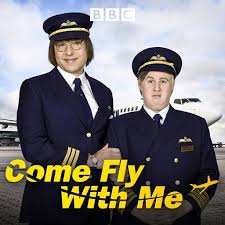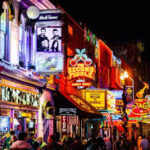come fly with me In an era where global travel has become more accessible than ever before, the phrase “Come Fly with Me” resonates as a symbol of adventure, freedom, and the joy of exploration. Whether it’s the thrill of boarding a plane, the excitement of discovering new destinations, or the nostalgia of classic air travel experiences, this iconic phrase captures the essence of our collective love for flying.
In this article, we dive deep into the cultural significance of “Come Fly with Me”, its influence on music, movies, and television, and how the concept of flying has evolved over the years. From its origins in the golden age of aviation to its impact on the modern travel industry, let’s explore why “Come Fly with Me” has become synonymous with the thrill of travel.
The Origins of “Come Fly with Me”
The phrase come fly with me is best known as the title of a popular song by legendary crooner Frank Sinatra. Released in 1958 as part of his album of the same name, the song quickly became an anthem for jet setters and lovers of air travel. The upbeat tune, with its smooth, jazzy rhythms and playful lyrics, paints an alluring picture of flying to exotic destinations, exploring new cities, and escaping the ordinary.
Frank Sinatra’s “Come Fly with Me” taps into the optimism of the 1950s, a time when commercial air travel was still a luxury and flying was seen as glamorous. The song’s lyrics depict flying not just as a mode of transportation but as a thrilling escape, a call to adventure. The timeless appeal of the song still endures, and it continues to be associated with the golden age of air travel, representing a sense of elegance, sophistication, and possibility.
The Golden Age of Aviation and Its Influence on Travel Culture
The 1950s and 1960s marked the golden age of aviation, when air travel became more accessible to the public, though still reserved for the elite. Airlines competed to provide the most luxurious and comfortable flying experiences, with stylish uniforms, gourmet meals, and top-tier service. Flying was seen as a glamorous activity, and airliners like Pan Am, TWA, and BOAC became synonymous with luxury travel.
Come Fly with Me was released at the height of this era, perfectly capturing the excitement of travel in a time when jet planes were an entirely new phenomenon. The song’s playful spirit matched the growing fascination with flight. For many, air travel was a dream come true, and Frank Sinatra’s lyrics epitomized the allure of flying.
The aviation industry’s push for glamour during this period not only reflected in Come Fly with Me but in other elements of pop culture. Movies, television shows, and advertisements often depicted flight as a symbol of romance, mystery, and opportunity, further embedding the idea of air travel in the collective imagination.
Come Fly with Me in Pop Culture: Music, Movies, and Television
Beyond the classic song by Frank Sinatra, “Come Fly with Me” has been referenced, remade, and celebrated across various forms of media. Here are some key moments in pop culture where the phrase “Come Fly with Me” has taken center stage:
- The 1960s TV Show: “Come Fly with Me”
In 1963, a British television series titled Come Fly with Me premiered, showcasing the adventures of various airline passengers. Though short-lived, the show further cemented the idea of air travel as an exciting and fascinating subject for storytelling. It was a reflection of the 1960s era, when aviation was not only about getting from point A to point B, but also about the experience of flying itself.
- The Music Industry: Cover Versions and Modern Interpretations
The enduring legacy of Come Fly with Me has resulted in numerous covers and adaptations by artists in the decades since its release. Notable renditions include versions by Michael Bublé, whose smooth voice and contemporary style introduce the song to a new generation of listeners. Bublé’s take on Come Fly with Me brings a fresh, modern twist to the timeless classic, keeping the spirit of the song alive in today’s pop culture.
- Movies: The Symbolism of Flying
The phrase Come Fly with Me has also made its way into films, often used to symbolize the longing for adventure and freedom. In movies where characters embark on journeys, whether for love, career, or self-discovery, air travel is often used as a metaphor for crossing boundaries and embracing new experiences. Films like Catch Me If You Can and The Terminal illustrate the themes of travel and exploration, indirectly evoking the spirit of Come Fly with Me.
- Television Shows: Celebrating the Joy of Travel
In recent years, television shows like Come Fly with Me (the British comedy series) have revisited the theme of aviation, albeit in a more humorous and satirical context. This show, which aired in 2010, was a mockumentary set in an airport, exploring the quirks and idiosyncrasies of passengers and flight attendants. While the tone was comedic, it still evoked the underlying fascination with travel that has made Come Fly with Me such a lasting cultural reference.
Air Travel Today: The Evolution of “Come Fly with Me”
The modern world of air travel is vastly different from the one Frank Sinatra immortalized in his 1958 hit. In the age of budget airlines, security lines, and longer flights, the golden age of aviation feels like a distant memory. However, the sentiment behind Come Fly with Me—the sense of adventure and the thrill of exploring new places—still remains a driving force behind why people travel today.
- The Rise of Budget Airlines
Budget airlines have democratized air travel, allowing millions of people to fly who previously couldn’t afford it. Companies like Ryanair, EasyJet, and Southwest Airlines have revolutionized the industry, offering affordable options for short-haul travel across the globe. While the experience may not be as luxurious as the flights of the past, the spirit of adventure that Come Fly with Me embodies is still alive in the millions of travelers who board planes every day.
- Long-Haul Flights and the Quest for Comfort
With the rise of long-haul international flights, airlines have upped the ante in terms of comfort, offering premium cabins, gourmet meals, and in-flight entertainment systems. Travelers now enjoy higher levels of comfort and service, especially in business and first class, making air travel a more enjoyable experience despite the long duration. The idea of flying with style still resonates with those who seek the luxury and charm once associated with flying.
- Technology and the Changing Landscape of Air Travel
In today’s digital world, air travel has become more streamlined thanks to technology. Passengers can now book flights, check-in, and receive updates via mobile apps, making the entire experience smoother. However, the sense of wanderlust that Come Fly with Me evokes continues to inspire millions to take to the skies, embracing new destinations and cultures.
Conclusion: The Enduring Allure of “Come Fly with Me”
The phrase Come Fly with Me captures more than just the act of air travel—it symbolizes the allure of exploration, the freedom to travel, and the excitement of discovering new horizons. From its origins in Frank Sinatra’s classic song to its continued presence in pop culture, the concept of flying as a gateway to adventure remains timeless.



